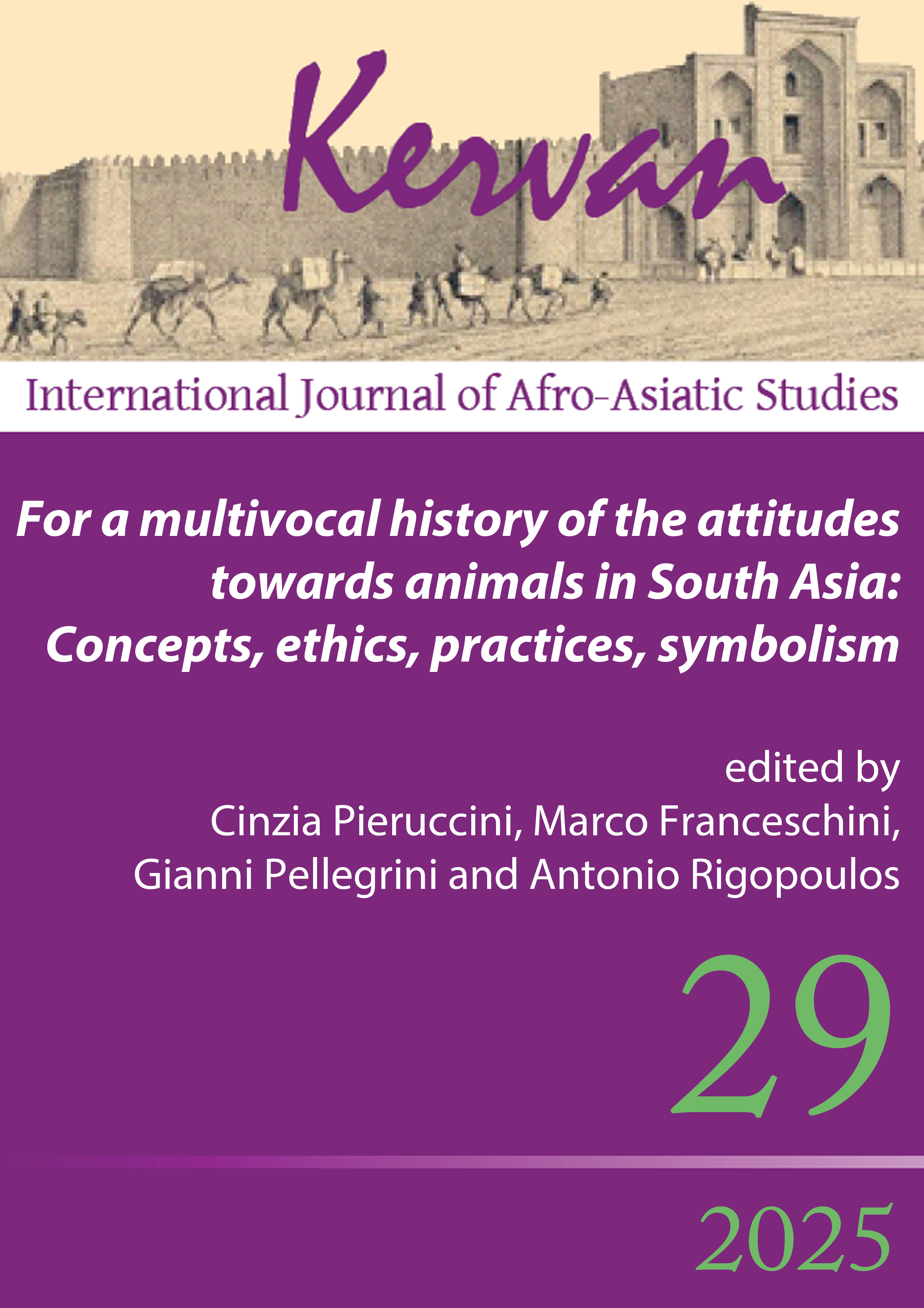Utopian ahiṃsā and the violence inherent in food in early Buddhism: Pāli texts vis-à-vis early Upaniṣads and Aśoka edicts
DOI:
https://doi.org/10.13135/1825-263X/12160Abstract
The present contribution aims to analyse some early Buddhist tenets in the Suttanipāta (verses: 220-221). According to this text, the layman cannot fully practise ahiṃsā (non-violence / non-harmfulness) while, in contrast, the monk always protects animals; the layman never being equal to a monk due to the latter’s meditative practice. The study will explore how violence is inextricably connected with food through the analysis of some of the stages presented in the Sāmaññaphalasutta’s Buddhist path of liberation and the foundational myth in the Aggaññasutta. These two texts will be confronted with Upaniṣadic evidence to contextualise these ideas in a broad Indian ascetic milieu. Finally, we will investigate how the Suttanipāta’s principle, according to which the monk always protects animals, has been assimilated and utilised by King Aśoka Maurya, with a particular reference to the Rock Edict 1.
Downloads
Downloads
Published
Issue
Section
License
Gli autori che pubblicano su Kervan accettano le seguenti condizioni:
- Gli autori mantengono i diritti sulla loro opera e cedono alla rivista il diritto di prima pubblicazione dell'opera, contemporaneamente licenziata sotto una Licenza Creative Commons - Attribuzione che permette ad altri di condividere l'opera indicando la paternità intellettuale e la prima pubblicazione su questa rivista.
- Gli autori possono aderire ad altri accordi di licenza non esclusiva per la distribuzione della versione dell'opera pubblicata (es. depositarla in un archivio istituzionale o pubblicarla in una monografia), a patto di indicare che la prima pubblicazione è avvenuta su questa rivista.


 The articles that have appeared on Kervan since 2016 are rated as Class A in the system of National Scientific Qualification (ASN, disciplines 10/N1 and 10/N3).
The articles that have appeared on Kervan since 2016 are rated as Class A in the system of National Scientific Qualification (ASN, disciplines 10/N1 and 10/N3). The journal has been approved for inclusion in DOAJ. The DOAJ listing of the journal is available at
The journal has been approved for inclusion in DOAJ. The DOAJ listing of the journal is available at  The journal has been approved for inclusion in ERIH PLUS. The ERIH PLUS listing of the journal is available at
The journal has been approved for inclusion in ERIH PLUS. The ERIH PLUS listing of the journal is available at  Kervan was just accepted for indexing in SCOPUS. This important milestone ensures that articles published in Kervan are easily found when searching for library, archives and Information science and it enables Kervan authors to keep track of how often their article has been cited by others.
Kervan was just accepted for indexing in SCOPUS. This important milestone ensures that articles published in Kervan are easily found when searching for library, archives and Information science and it enables Kervan authors to keep track of how often their article has been cited by others.
